1. Centralia, Pennsylvania
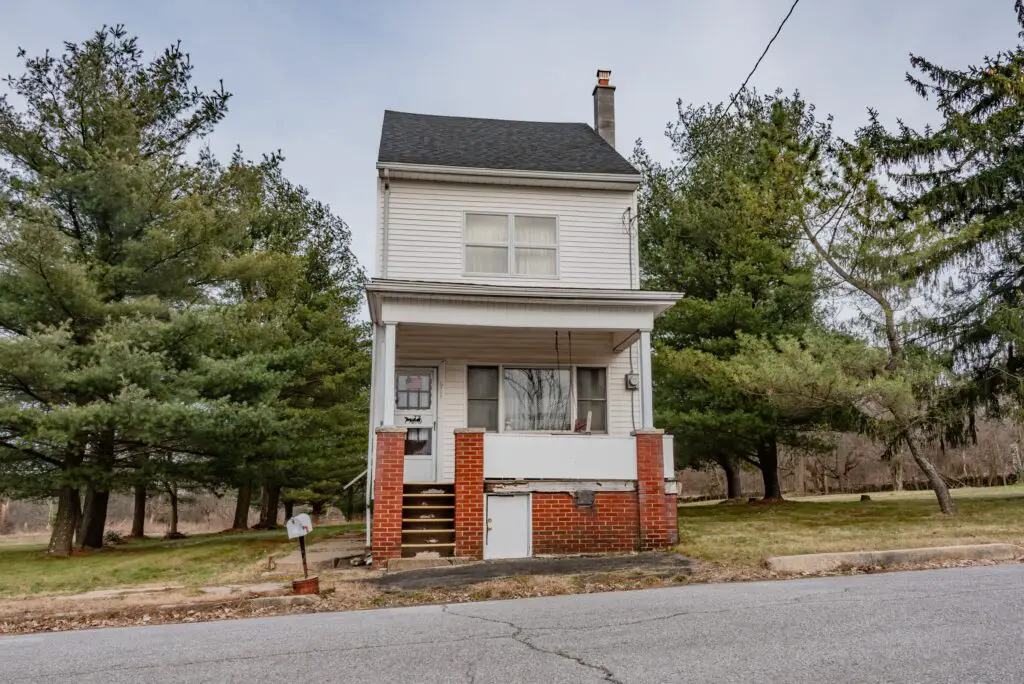
If you’ve ever wondered what it’s like to live above a fire, Centralia is your answer—except, nobody really lives there anymore. A coal mine fire ignited beneath this tiny Pennsylvania town in 1962 and it’s been burning ever since, forcing most residents to evacuate over the years. The streets are cracked and steaming, and entire blocks of homes have been swallowed by overgrowth. Today, only a handful of residents remain, stubbornly clinging to the place they once called home says 94.5 PST.
Walking through Centralia feels like a scene from a post-apocalyptic movie. Street signs still stand, but they point to nowhere. The silence is eerie, only broken by the occasional gust of wind or the hiss of smoke rising from the earth. It’s one of those places where you can almost feel time holding its breath adds WNEP.
2. Bodie, California
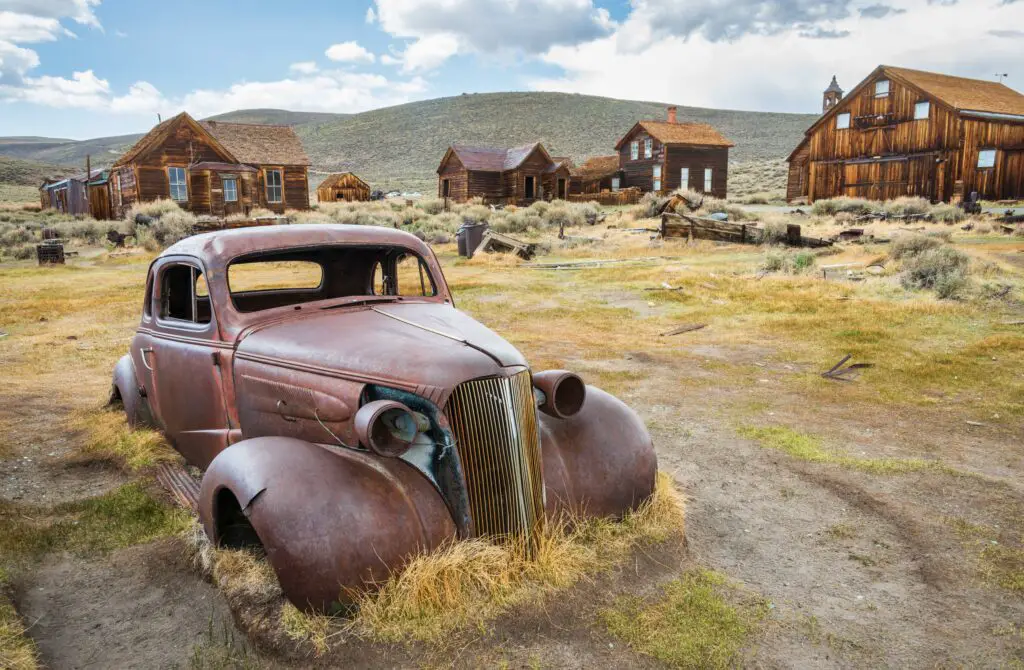
Once a booming gold rush town, Bodie was full of saloons, miners, and rough-and-tumble charm. At its peak in the late 1800s, it had over 10,000 residents and more than 60 saloons—but when the gold dried up, so did the town. People packed up and left, leaving behind furniture, dishes, and even clothing as if they might come back shares Alta Journal.
Today, Bodie is preserved in a state of “arrested decay,” which means everything’s left just as it was, slowly crumbling. Peeking into the windows feels like looking through a portal to the past. Dust covers antique school desks, and rusting cars sit where they were last parked. It’s beautiful and haunting all at once adds LADBible.
3. Pripyat, Ukraine
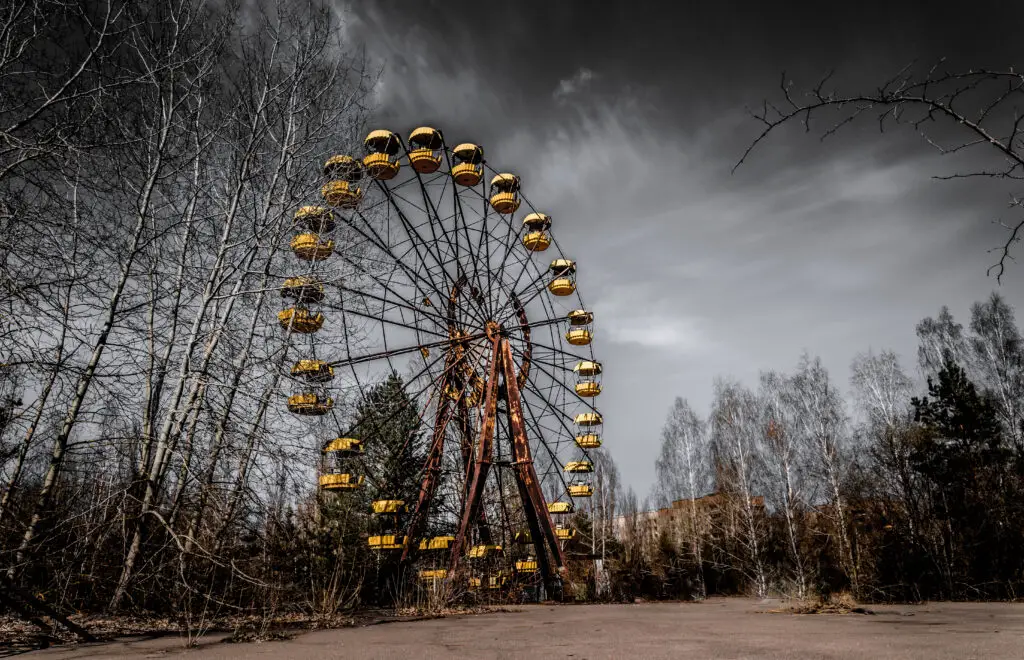
Built to house the workers of the Chernobyl Nuclear Power Plant, Pripyat was once a modern Soviet city with schools, hospitals, and an amusement park. But after the 1986 nuclear disaster, the entire population was evacuated in a matter of hours. Today, the city is frozen in time, with children’s toys still scattered on playgrounds and textbooks open on desks.
Nature has begun reclaiming the streets, with trees growing through sidewalks and animals roaming freely. The silence is almost deafening, broken only by the hum of Geiger counters. Tourists can visit with permission, but radiation levels remain a concern. It’s a ghost city wrapped in tragedy.
4. Glenrio, Texas/New Mexico
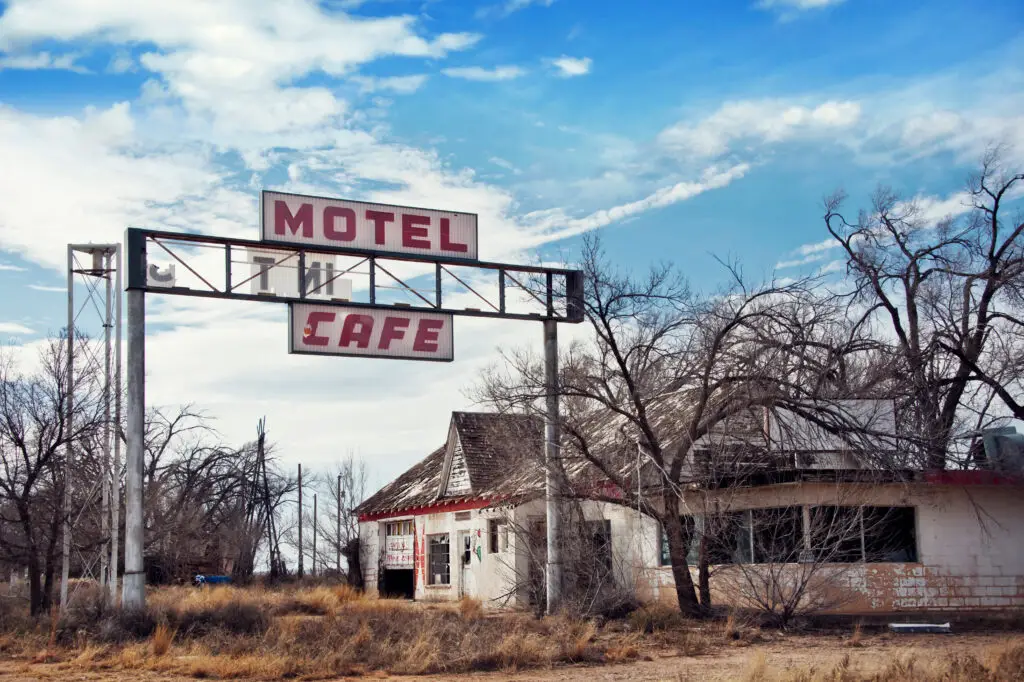
Glenrio straddles the border between Texas and New Mexico, and during the heyday of Route 66, it was a lively little stop. It had diners, gas stations, and motels welcoming travelers making their way across the country. But when the interstate bypassed it, Glenrio was more or less forgotten overnight.
Now the buildings are slowly being reclaimed by the desert. Sun-bleached signs still advertise rooms and food that no longer exist. It’s easy to imagine families pulling off the road for a milkshake, unaware it would all vanish. The town is a quiet reminder of how progress can leave places behind.
5. Hashima Island, Japan
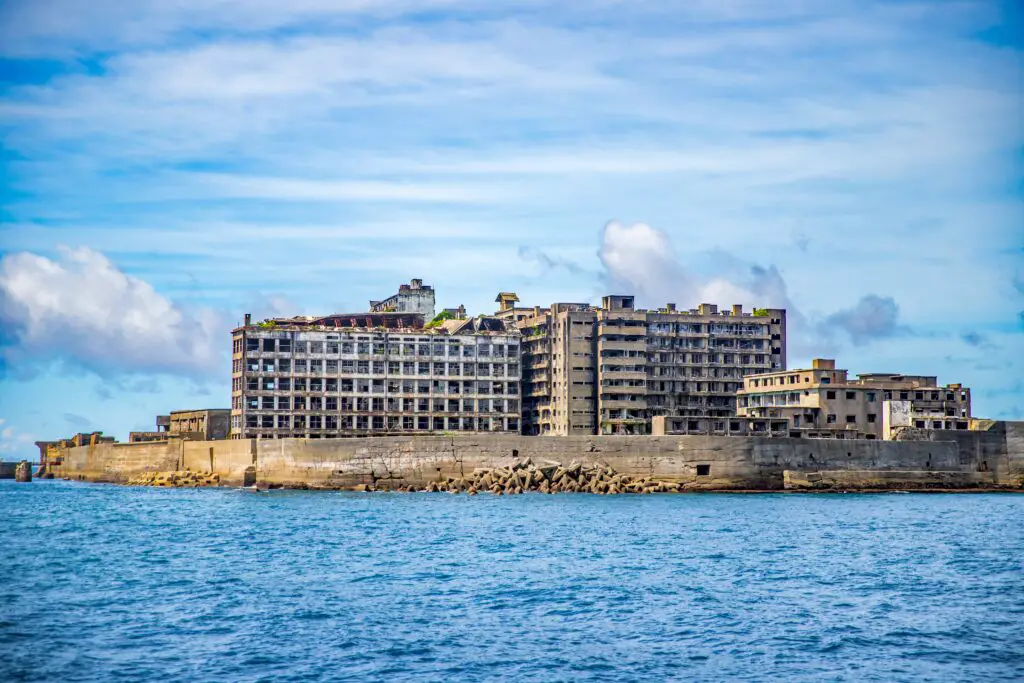
Also known as “Battleship Island” because of its shape, Hashima was once a bustling coal mining community. At its peak, thousands of workers lived in cramped apartments on the tiny island off Nagasaki’s coast. But when the coal industry collapsed in the 1970s, the island was quickly deserted.
Buildings still stand, though they’re crumbling under the weight of time and salty sea air. Rusted playground equipment and empty stairwells add to the eerie atmosphere. It’s one of those places that’s both fascinating and a little unsettling. Today, you can visit on guided tours, but much of the island is off-limits due to safety concerns.
6. Rhyolite, Nevada
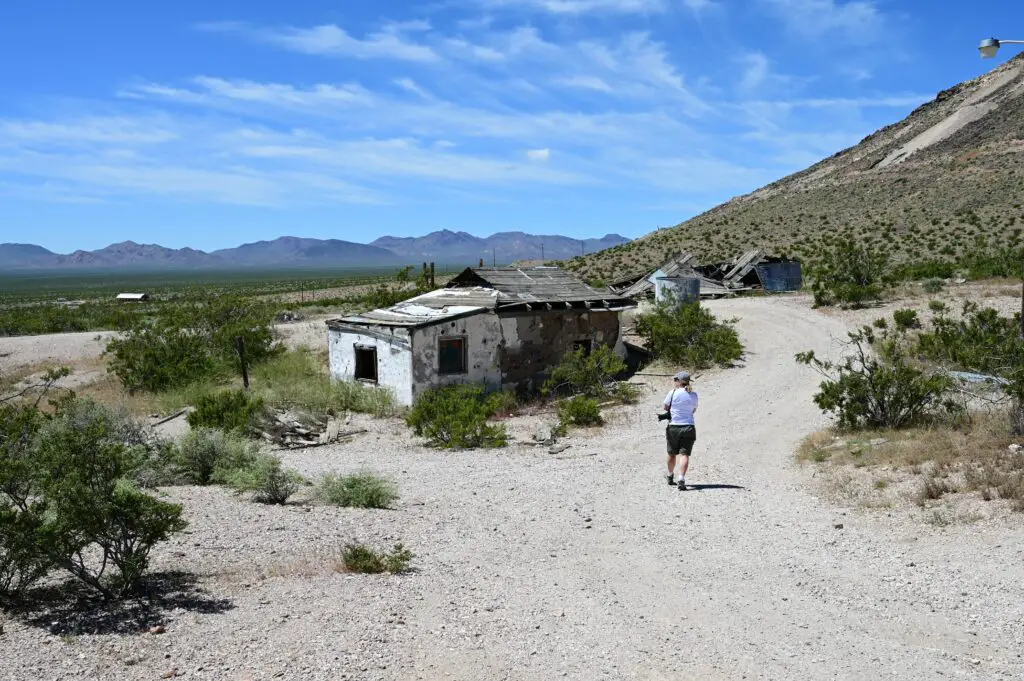
Just outside Death Valley sits Rhyolite, a town that sprang up during a gold rush in the early 1900s. It had electricity, an opera house, and even an ice cream parlor. But like many boomtowns, it fizzled out just as quickly as it rose.
The skeletons of buildings remain, including a crumbling bank and a three-story jail. There’s even a ghost sculpture garden nearby that adds to the surreal vibe. Visiting feels like walking through the remains of someone’s abandoned dream. The desert is slowly swallowing it all, but the bones of the past are still visible.
7. Kolmanskop, Namibia
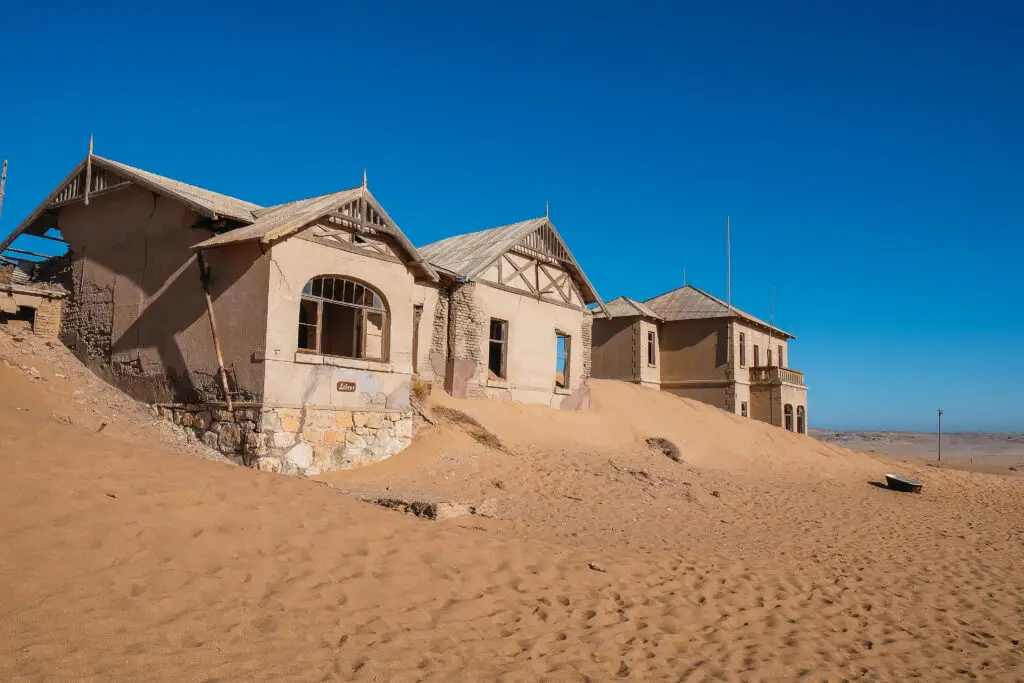
Kolmanskop was once a prosperous diamond mining town in the Namib Desert. The German settlers built grand homes, a hospital, and even a bowling alley. But after the diamond supply dwindled in the 1950s, the town was abandoned.
Now, the desert is reclaiming every inch. Sand has poured into the houses, covering floors and climbing walls. It’s both beautiful and haunting to see sunlight streaming through shattered windows onto waves of sand inside a living room. The contrast of luxury and decay is breathtaking.
8. Cairo, Illinois
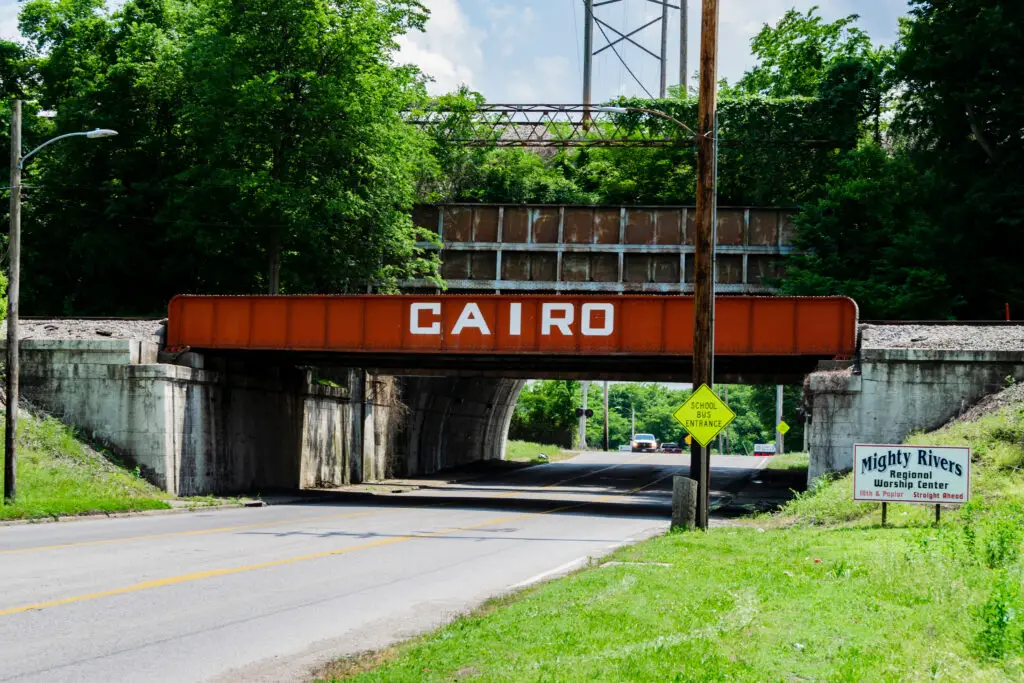
Cairo sits at the confluence of the Mississippi and Ohio Rivers and once thrived as a riverboat hub. In the late 1800s and early 1900s, it was a bustling city with grand hotels and a strong economy. But racial tension, flooding, and economic downturns led to its slow decline.
Now, entire blocks are boarded up or falling down. Nature has crept into the cracks, and silence fills once-busy streets. It’s a place with deep history and a heavy heart. You can still sense the life that once flowed through it, like a ghost just out of reach.
9. Kayaköy, Turkey
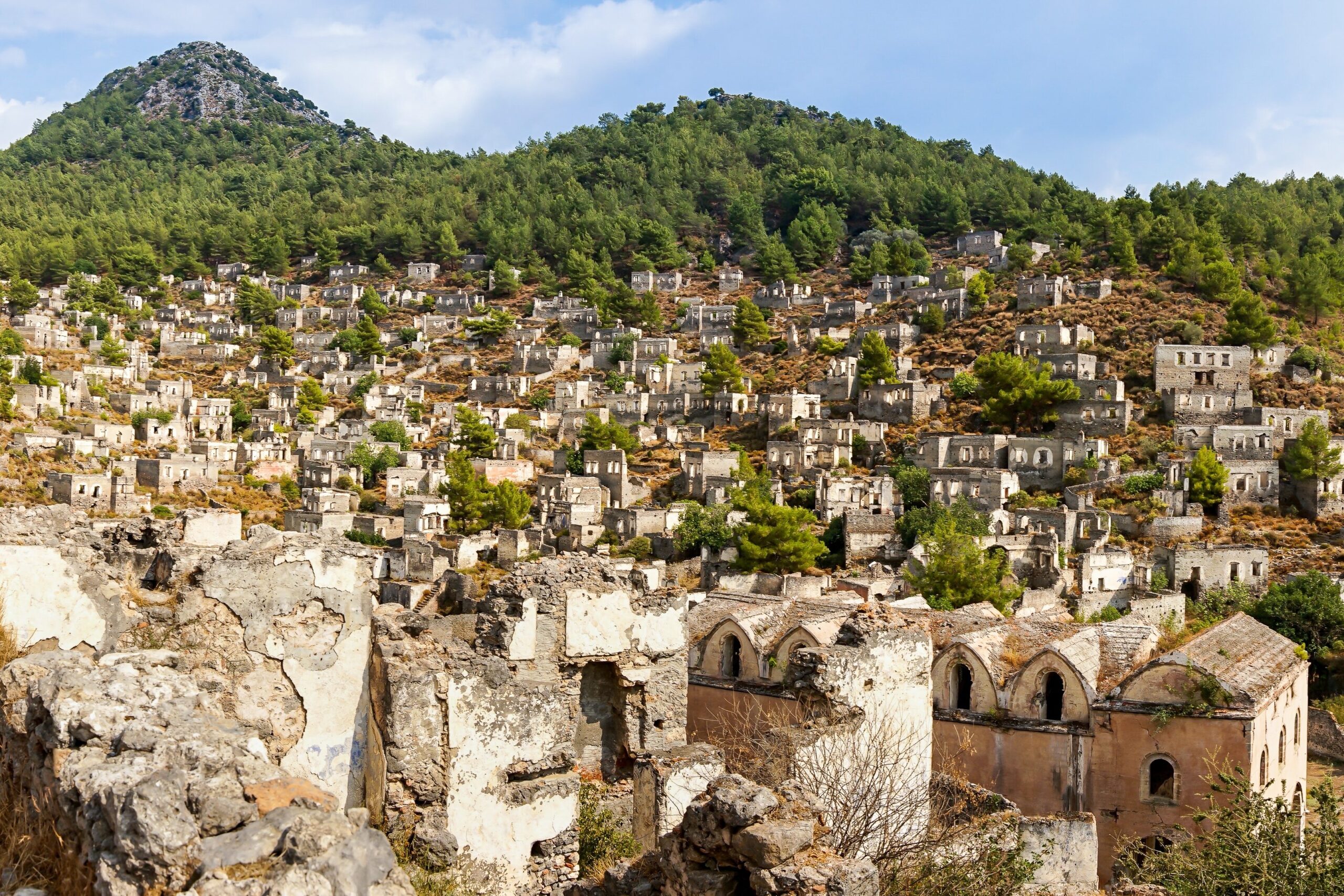
Nestled in the hills of southwestern Turkey, Kayaköy was once a thriving Greek village. But after a population exchange between Greece and Turkey in 1923, the residents were forced to leave. The stone houses, churches, and fountains have stood empty ever since.
Time and weather have worn down the buildings, but the spirit of the town lingers. Wildflowers now grow between cobblestones, and goats roam freely among the ruins. It’s haunting, but in a strangely peaceful way. The silence almost feels respectful.
10. Oradour-sur-Glane, France
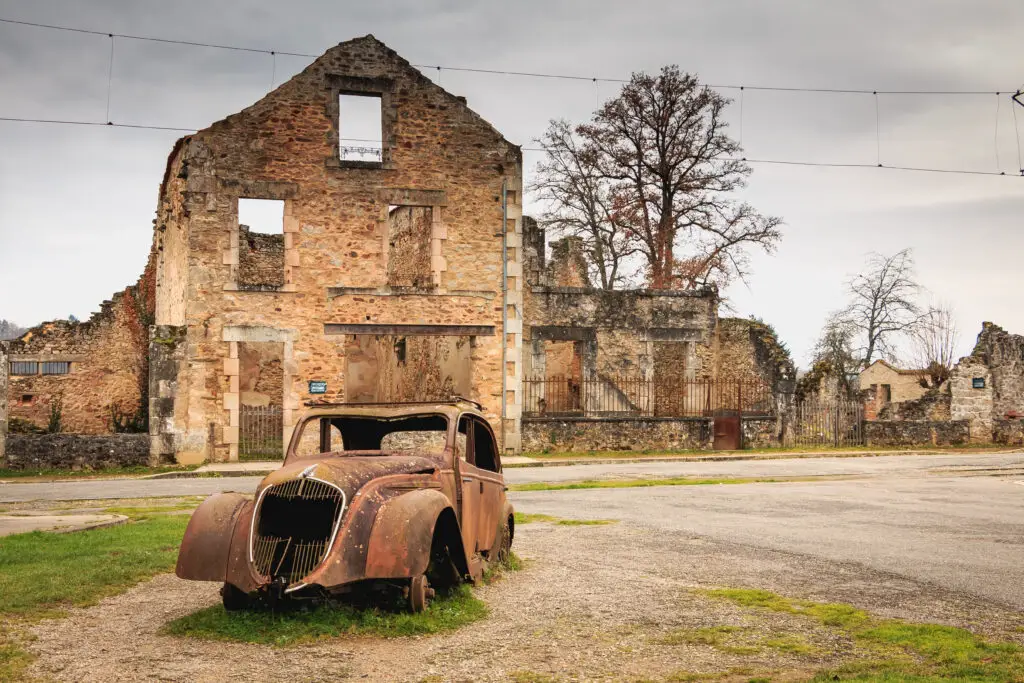
This village in France is not just abandoned, it’s a preserved memorial. In 1944, Nazi troops massacred over 600 residents here, leaving the town in ruins. Rather than rebuild, the French government left everything exactly as it was.
Rusty bicycles lean against broken walls, and burned-out cars sit silently in the streets. Walking through it is deeply sobering, like stepping into a frozen moment of grief. Signs remind visitors to respect the sanctity of the place. It’s haunting in the most human way possible.
11. Pyramiden, Norway
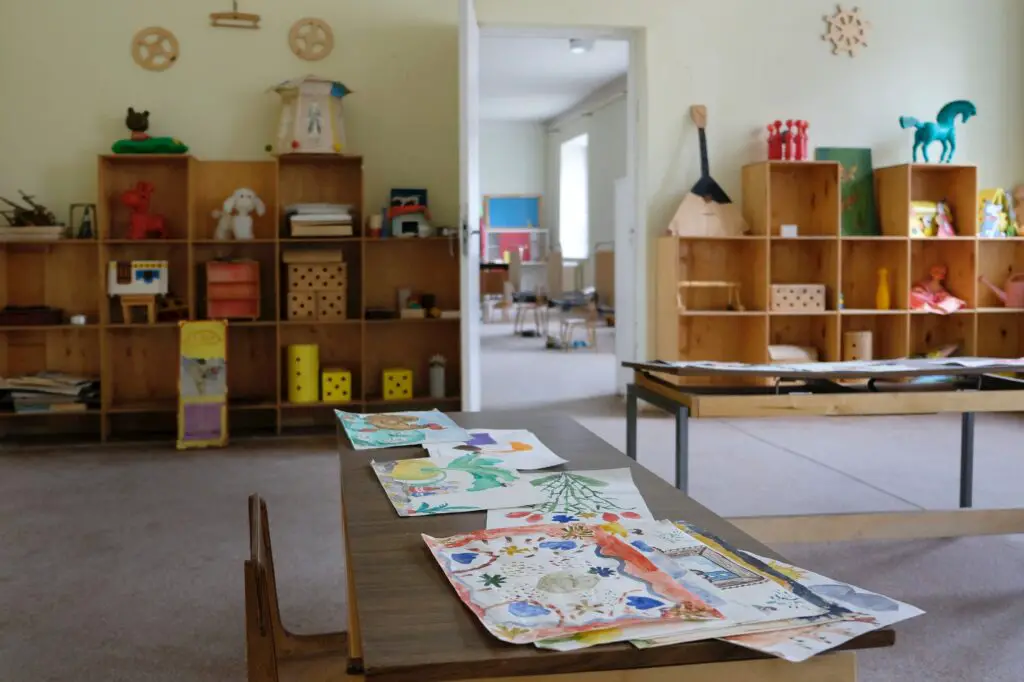
Located in the Arctic Circle, Pyramiden was a Soviet mining town in Svalbard. It had a school, a pool, and even a statue of Lenin watching over the icy tundra. But when the coal mine closed in 1998, the residents left almost overnight.
The cold has preserved everything remarkably well. Desks are still lined with papers, and pianos sit waiting to be played. It feels like a time capsule from a world that shouldn’t exist up there. You can take a guided tour, but it’s not for the faint of heart.
12. Craco, Italy
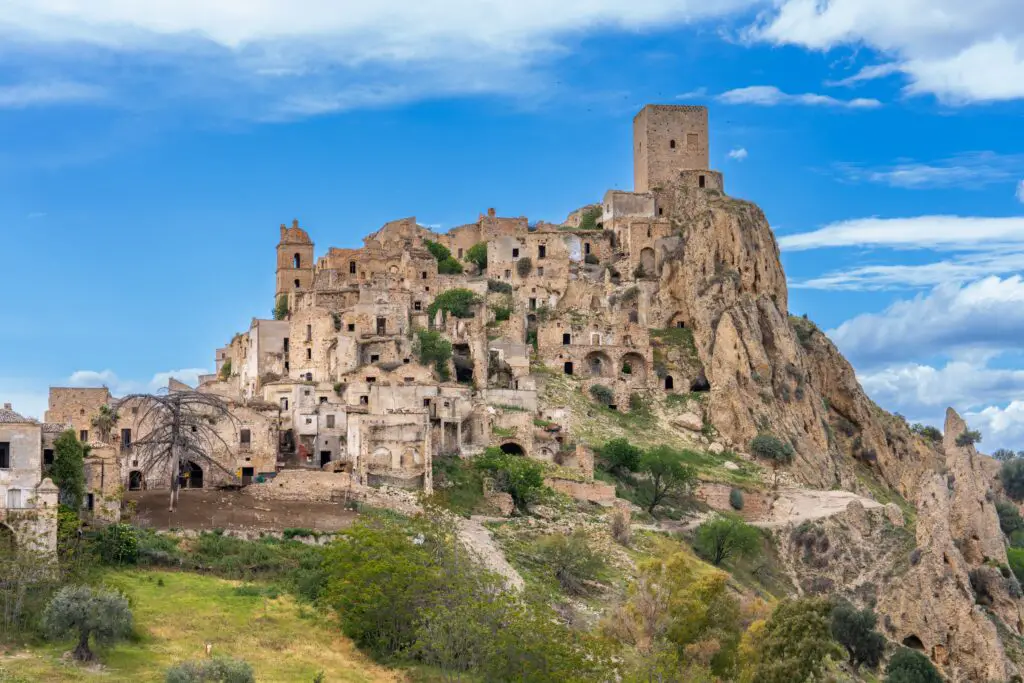
Built on a steep hill, Craco was once a beautiful medieval village. Landslides, earthquakes, and poor infrastructure eventually forced the last of its residents to leave in the 1960s. Today, the buildings stand empty, clinging to the cliffside like a ghostly fortress.
It’s popular with filmmakers and photographers, and you can see why. The streets are silent, but the stone arches and bell towers still echo with memory. There’s a sense of romantic tragedy here, like a story that didn’t get its proper ending. You almost expect someone to turn a corner at any moment.
13. Kennecott, Alaska
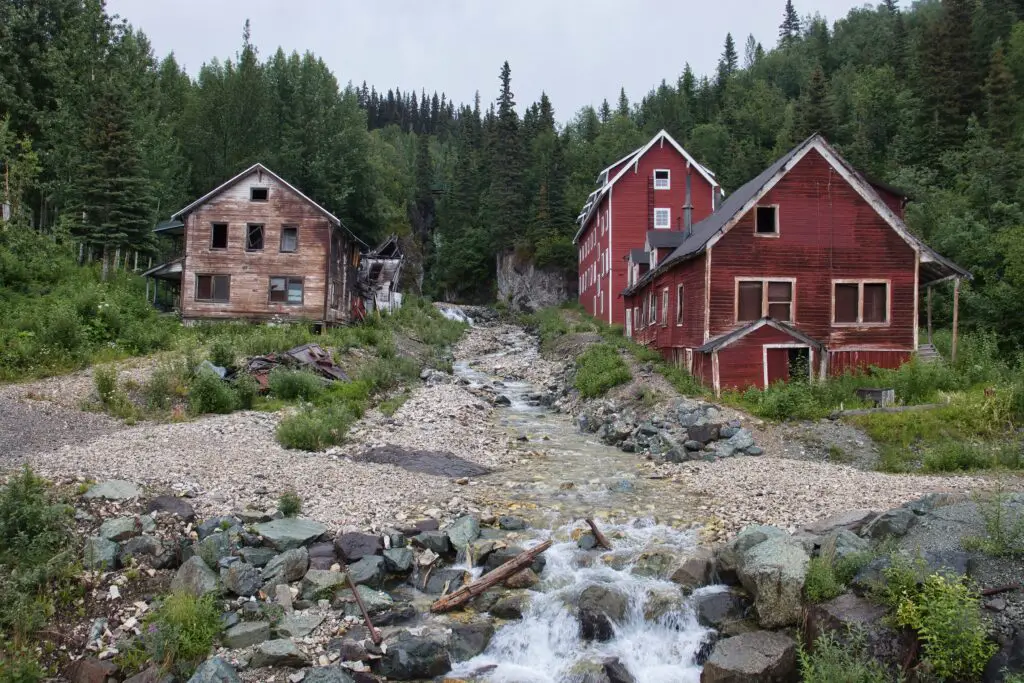
This remote mining town in Alaska was built to extract copper from the nearby mountains. It operated from 1911 to 1938, and during that time it had homes, a hospital, and even a tennis court. But when the copper ran out, the town was left to the elements.
Today, wooden buildings still cling to the hillside, with rusted machinery scattered about. Snow blankets everything in the winter, adding to the otherworldly quiet. You can hike around the ruins during the summer months, but it’s a long journey to get there. It feels like standing at the edge of the world.
14. Humberstone, Chile
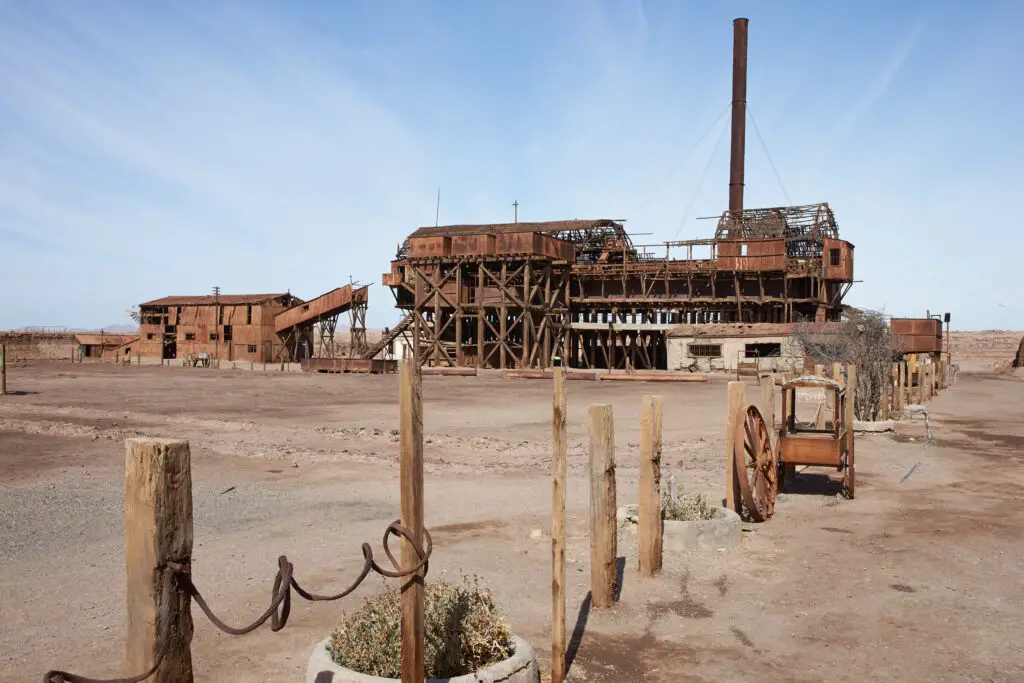
Once a booming saltpeter mining town, Humberstone was abandoned in the 1960s when synthetic alternatives made the industry obsolete. Located in the Atacama Desert, it’s one of the driest places on earth. But despite the harsh environment, the buildings are remarkably well-preserved.
School buildings, theaters, and even an old swimming pool remain eerily intact. You can almost hear the laughter of children echoing through the hallways. It’s like a stage set that no one cleared away. The stillness out there feels strangely loud.
15. Agdam, Azerbaijan
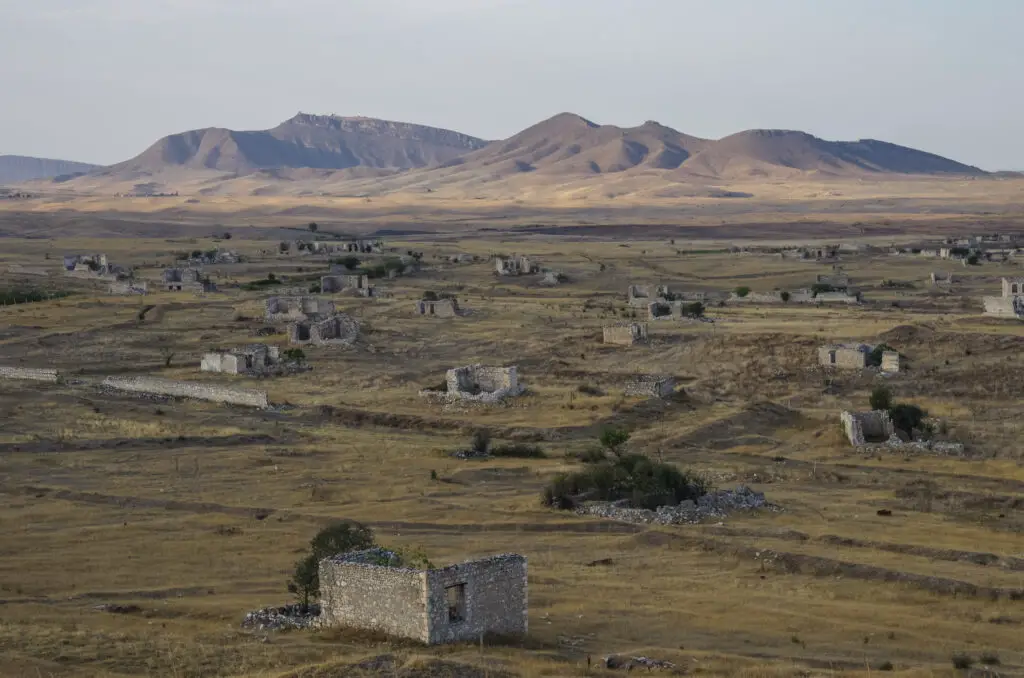
Once home to over 40,000 people, Agdam was abandoned during the Nagorno-Karabakh conflict in the early 1990s. It was shelled and heavily damaged during the fighting, and it’s remained empty ever since. Nature and war have taken their toll on the city.
Buildings are roofless, and vines creep over crumbling walls. It’s a solemn place, marked by loss and silence. You can still see outlines of homes and schools, now just shadows of what they once were. It’s haunting not just because it’s empty, but because it’s full of memory.
